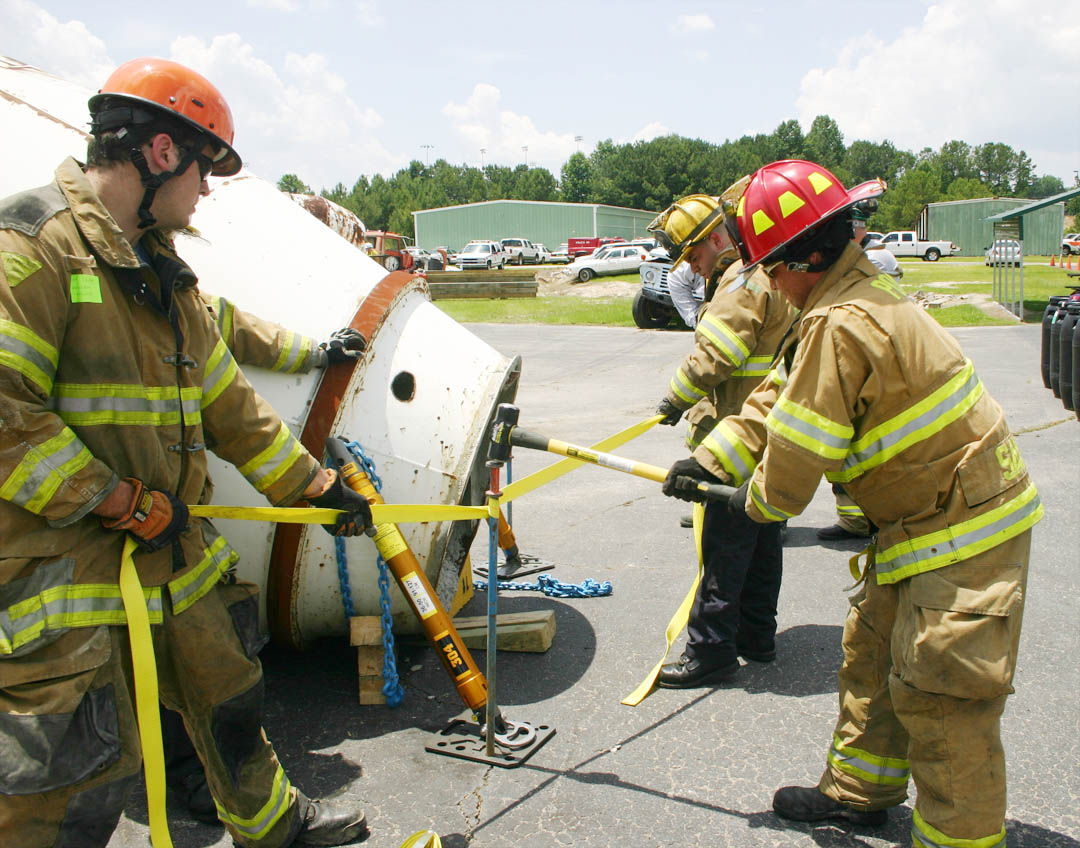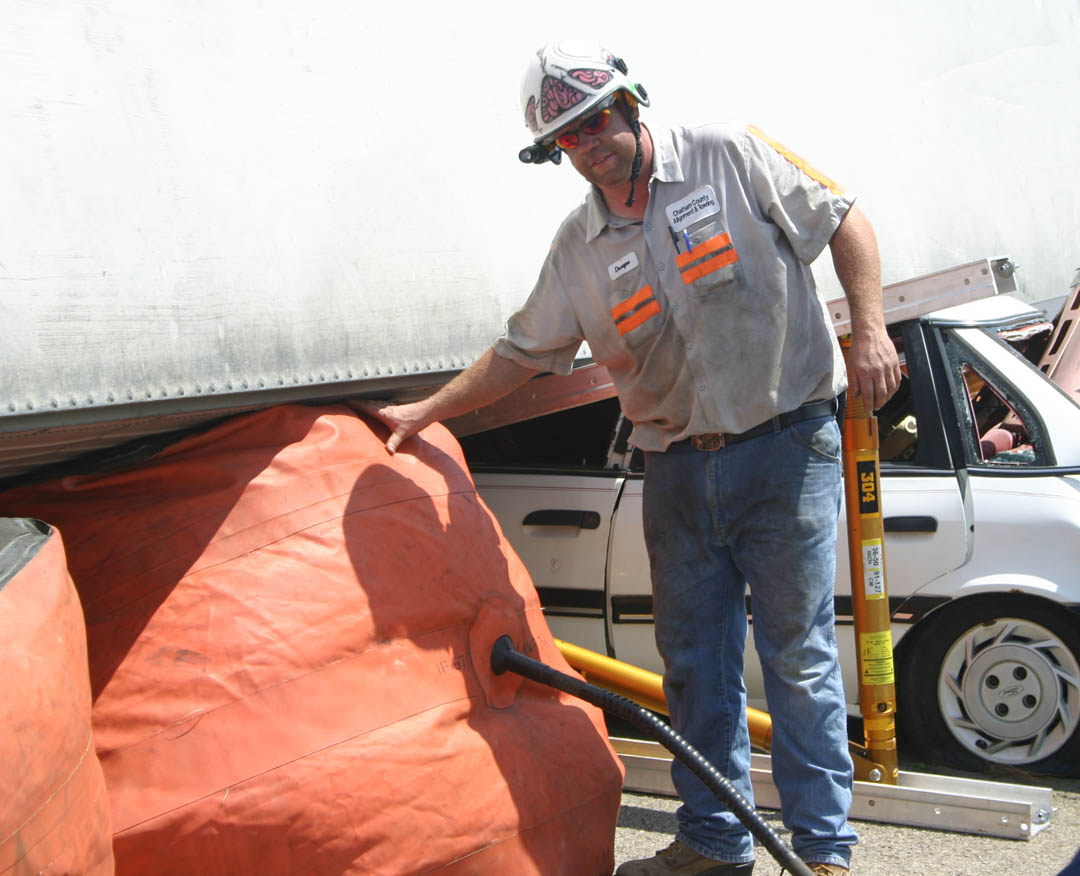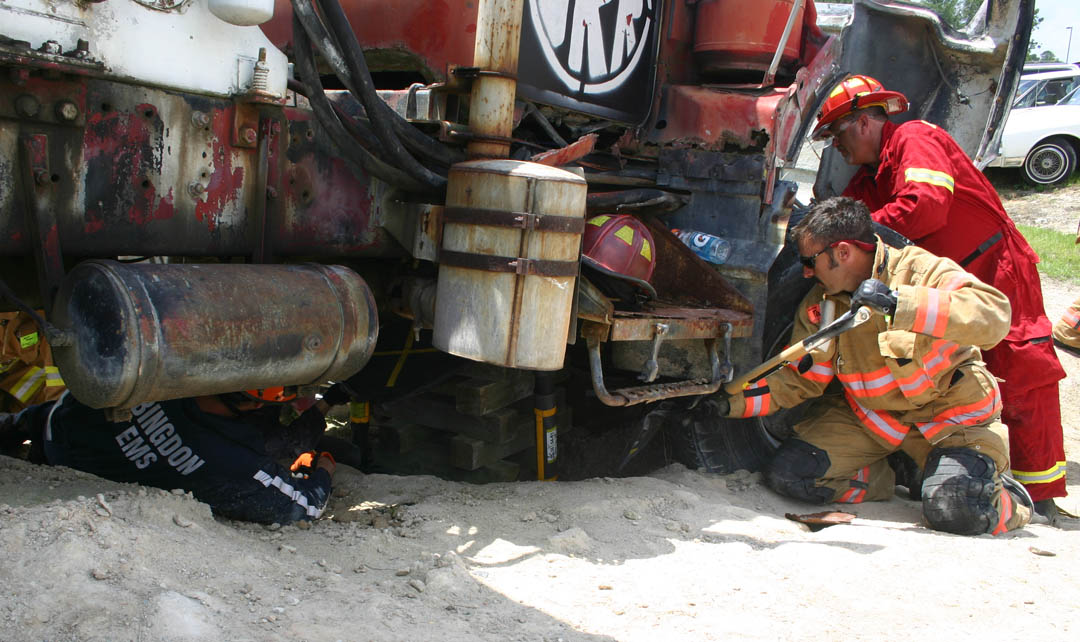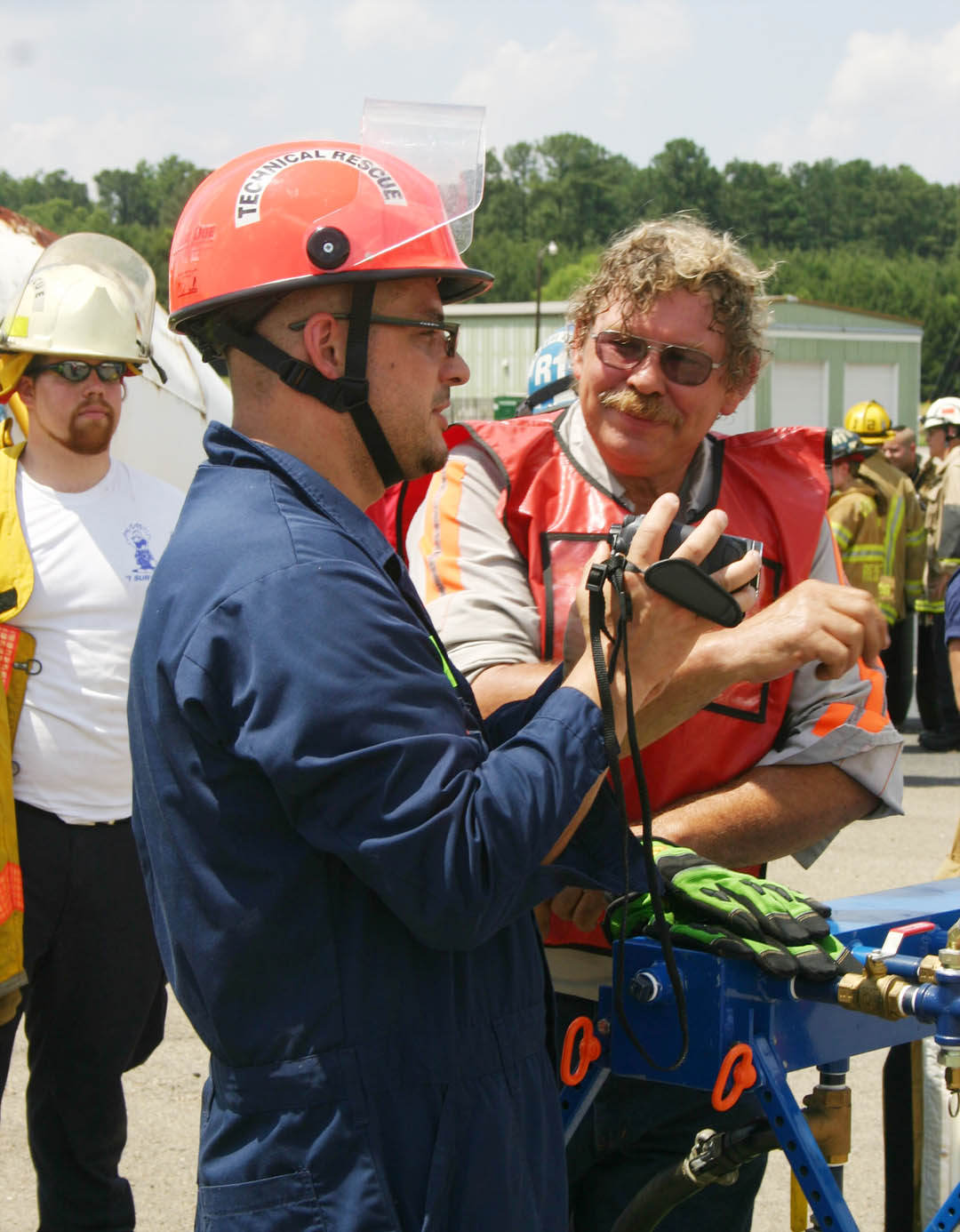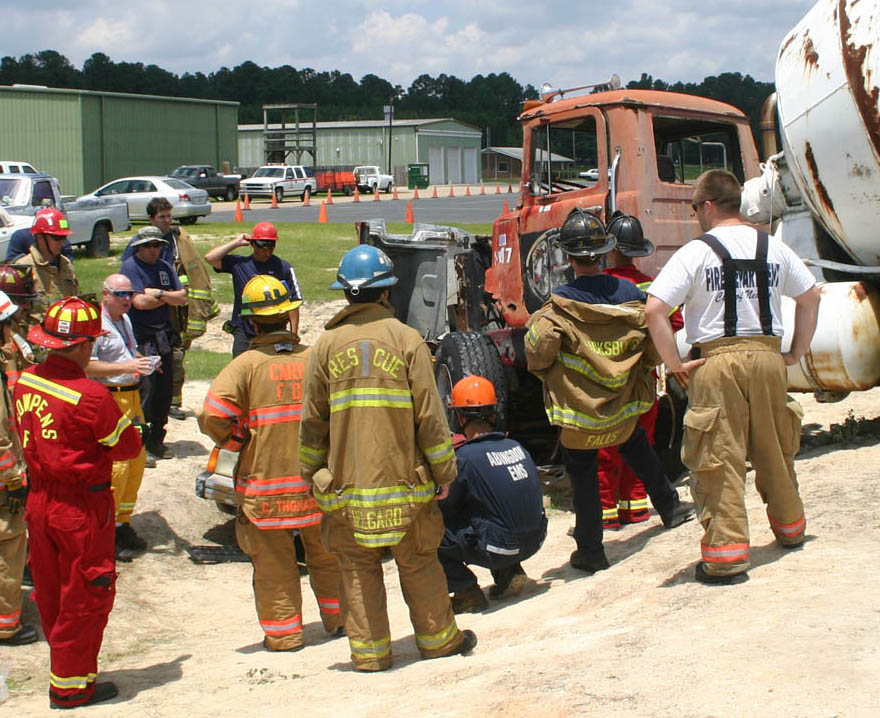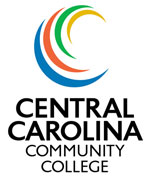SANFORD - Mayhem on the highway took place June 13-14 at Central Carolina Community College's Emergency Services Training Center.
Fortunately, dozens of firefighters and rescue personnel jumped to the rescue, working in 90-degree-plus weather to lift tractor-trailers, concrete trucks, a railroad car, and a bus off of a pickup truck, passenger cars, and motorcycle.
There were no injuries. In fact, there were no drivers or passengers in any of the vehicles involved in the eight accidents. Each collision was a realistic, hands-on training scenario for 77 firefighters and rescue workers to learn how to safely and effectively deal with accidents of this magnitude. They gathered at the ESTC from North Carolina, South Carolina, Virginia, Georgia, Maryland, Michigan, Connecticut, Florida, and Germany for this specialized training.
The training event, known as "Big Lift U" or "Heavy Lifting University," focused on the effective use of strut supports and low, medium, and high-pressure airbags for stabilizing and lifting large, heavy vehicles during extrication rescue situations.
The firefighters and rescue workers learned and practiced assessing heavy load accident scenarios, developing plans of action, and executing them. Vehicles had to be stabilized with struts and straps to prevent further movement. Then heavy-duty airbags were placed and inflated to lift the heavy vehicles off the smaller ones. In a real accident, this would enable the removal of people trapped in the smaller vehicles.
"A lot of people think that all firefighters do is put out fires," said Ed Terry, safety officer for the Carolina Trace Fire Department. "Fire departments have broader missions than ever. These are the guys who untangle cars, get the bodies out, and deal with hazardous materials. At Trace, we get about 200 calls a year and half of those are accidents or medical emergencies."
At the 'Big Lift U', the fire fighters, working in small teams, trained on four scenarios on Saturday and four on Sunday: railroad car-two vehicle collision, tractor trailer overturned on car, cement mixer on car in ditch, cement mixer drum on car, cement mixer truck overturned on car, motorcycle under school bus, car crushed by concrete slabs, and car under-ride with tractor trailer.
Each team assessed the scenarios, then went into action. Tapered blocks of lumber were forced under the vehicles on the bottom to keep them from further collapse and destabilizing the larger vehicle. In the stifling heat, firefighters wielded sledgehammers, pounding spikes into the asphalt road surface to secure struts to stabilize the larger vehicles. Strapping was also attached to the vehicles for additional stability. Then, slowly, air bags were inflated and the huge vehicles were lifted off the smaller ones. Had they been real accidents, the emergency workers would then have been able to reach those trapped in the smaller vehicles.
The training exercises were repeated as the teams rotated through the scenarios, each time becoming more confident in their abilities to deal with tractor-trailer, concrete truck, train, or bus collisions with smaller vehicles.
Steve Williamson was a fire fighter with Fayette County, Georgia, for 20 years before retiring for health reasons. Now, he's the territorial manager for Paratech, Inc., the company that provided the airbags, struts, straps and other materials, as well as one of the instructors, for the Big Lift training. Williamson was on hand to see that the firefighters had the equipment they needed to do the job.
"This training is so important," he said. "People do what they're trained to do repetitively. They have to keep the training up because, when an emergency comes, the firefighters' response must be second nature."
Chris Barrow, a firefighter with the Raleigh Fire Department agreed, saying that the most critical factor is to correctly size up the situation when arriving at an accident site.
"There's a challenge in dealing with big vehicles," he said. "We have to identify the hazards. Is it something simple or will we have call for more help? When firefighters have this training on dealing with heavy load accidents, it's something we can fall back on when the situations come up."
Irakli West, captain of the Haar Fire Department, Bavaria, Germany, said he came both to compare fire services training with that in his country and to learn about dealing with the large vehicle extrications. West also runs the largest online firefighters magazine in Germany, Feuerwehr im Netz. His pictures and commentary of the Big Lift event can be found at
www.fwnetz.de.
Before flying home, West posted his thoughts on the Big Lift training on his twitter page,
twitter.com/rakeman:
"Had a smashing time at "Big Lift University" in North Carolina - strongly recommended course."
North Carolina Fire and Rescue departments sending personnel for the training were Apex, Carrboro, Cary, Chapel Hill, Charlotte, Dunn, Jacksonville, Lincolnton, Moncure, Mooresville, Raleigh, Rosewood, Spout Springs, Tramway, and West Sanford.
"It is obvious from the wide geographical area that our students come from that this type of specialized technical rescue training is important to the emergency response community," said Landis Phillips, ESTC director. "We are pleased to work in partnership with companies such as Paratech Inc. and instructors who are recognized nationally for their expertise in emergency response training. The ESTC is committed to serving the emergency response community as they respond and serve their respective communities."
Billy Leach Jr., certified wreckmaster and developer of Big Rig Rescue, organized the Big Lift University. Other instructors were Nigel Letherby, Paratech Inc. national product specialist; Kevin Cieciorka, owner/operator and Dwayne Smith, recovery operator of Chatham County Alignment and Towing; and Capt. Robert Morris, of the Fire Department of New York Rescue Co. #1, Special Ops Command.
